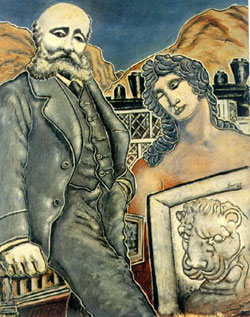“. . . . Among these one of the first I examined was that often there is less perfection in works composed of several separate pieces and made by different masters, than in those at which only one person has worked. So it is that one sees that buildings undertaken and completed by a single architect are usually more beautiful and better ordered than those that several architects have tried to put into shape, making use of old walls which were built for other purposes. So it is that these old cities which, originally only villages, have become, through the passage of time, great towns, are usually so badly proportioned in comparison with those orderly towns which an engineer designs at will on some plain that, although the buildings, taken separately, often display as much art as those of the planned towns or even more, nevertheless, seeing how they are placed, with a big one here, a small one there, and how they cause the streets to bend and to be at different levels, one has the impression that they are more the product of chance than that of a human will operating according to reason. And if one considers that there have nevertheless always been officials responsible for the supervision of private building and for making it serve as an ornament for the public, one will see how difficult it is, by adding only to the constructions of others, to arrive at any great degree of perfection.”
(René Descartes, Discourse on Method, beginning of Discourse 2, pp. 35–36 in the translation of F. E. Sutcliffe.)










